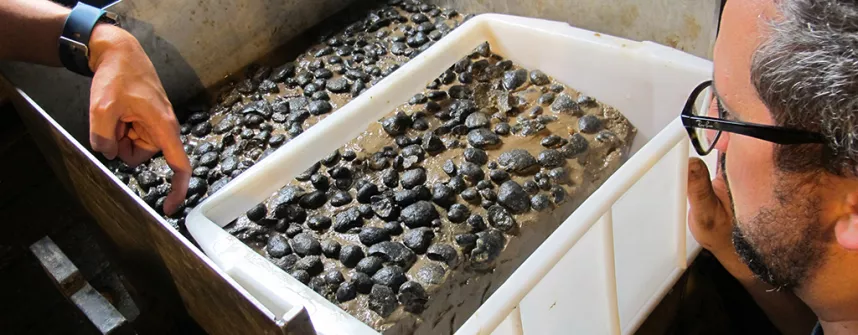International research team presents measures to protect the deep sea
February 28, 2020
The deep-sea is increasingly being used as a source of raw materials - and exploited industrially. An international research team, including Prof. Laurenz Thomsen from Jacobs University in Bremen, has now identified key areas for protecting this fragile ecosystem. They are described in the current issue of the renowned scientific journal "Nature Ecology and Evolution".
The increased use of the deep sea raises concerns worldwide about possible ecological consequences. The area, which begins at a water depth of 200 meters, is home to many rare, unique and unknown species. They are increasingly under multiple threats from industrial deep-sea mining, deep-sea fishing, climate change, and plastic pollution.
At the suggestion of "Nature Ecology and Evolution", the international working group led by Prof. Roberto Danovaro from the Polytechnic University of Marche Ancona in Italy carried out a survey with more than 100 deep-sea specialists and analyzed and discussed the results. As their goal, the scientists wanted to establish a list of measurement parameters with essential ecological variables covering all important aspects of deep-sea protection. These include the inventory of the larger organisms and their biomass present in the respective sea area, the food input of algae and other micro-organisms from the sea surface and their uptake into the food chain. This new approach of deep-sea monitoring is meant to be carried out mainly with the aid of reliable sensors and autonomous robots.
, Prof. Dr. Laurenz Thomsen is professor of Geosciences at Jacobs University. (Source: Jacobs University)"There is a great demand for recommendations on how the United Nations and the International Seabed Authority can support deep-sea protection," says Laurenz Thomsen, Professor of Geosciences at Jacobs University. "The survey was not about a wish list for monitoring the deep sea, but about defining parameters that can already be reliably measured," Thomsen continues.
The article, which builds on a publication in the Science Journal, comes at a time of increased preparations for the controversial deep-sea mining. Mining at the bottom of the sea is intended to help satisfy the constantly growing demand for raw materials especially for the production of battery-powered electric vehicles.
The OceanLab at Jacobs University, which is led by Professor Thomsen, has many years of experience in monitoring deep-sea exploration areas and developing underwater robots. Jacobs University is involved with various working groups in projects on the effects of deep-sea mining.
Article:
Ecological variables for developing a global deep-ocean monitoring and conservation strategy
Questions answered by:
Prof. Dr. Laurenz Thomsen | Professor of Geosciences
l.thomsen [at] jacobs-university.de | Tel.: +49 421 200-3254
